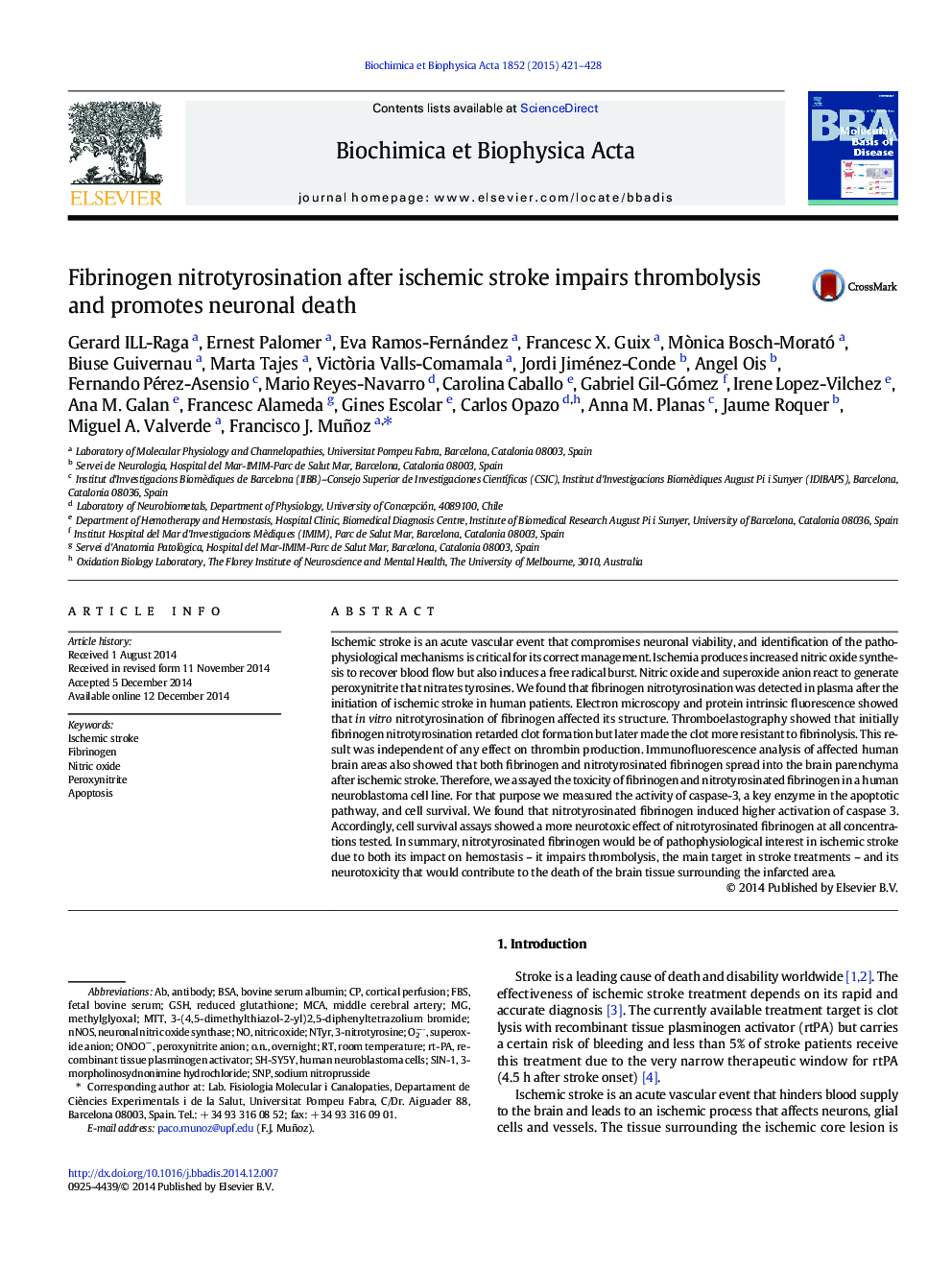| کد مقاله | کد نشریه | سال انتشار | مقاله انگلیسی | نسخه تمام متن |
|---|---|---|---|---|
| 1904652 | 1534649 | 2015 | 8 صفحه PDF | دانلود رایگان |
• Ischemic stroke induces nitro-oxidative stress in brain tissue and plasma.
• Fibrinogen nitrotyrosination is a very early event after ischemic stroke.
• The nitrotyrosination of fibrinogen changes its molecular structure.
• Fibrinogen nitrotyrosination retards clot formation and impairs fibrinolysis.
• Nitrotyrosinated fibrinogen enhances neuronal apoptosis in neuroblastoma cells.
Ischemic stroke is an acute vascular event that compromises neuronal viability, and identification of the pathophysiological mechanisms is critical for its correct management. Ischemia produces increased nitric oxide synthesis to recover blood flow but also induces a free radical burst. Nitric oxide and superoxide anion react to generate peroxynitrite that nitrates tyrosines. We found that fibrinogen nitrotyrosination was detected in plasma after the initiation of ischemic stroke in human patients. Electron microscopy and protein intrinsic fluorescence showed that in vitro nitrotyrosination of fibrinogen affected its structure. Thromboelastography showed that initially fibrinogen nitrotyrosination retarded clot formation but later made the clot more resistant to fibrinolysis. This result was independent of any effect on thrombin production. Immunofluorescence analysis of affected human brain areas also showed that both fibrinogen and nitrotyrosinated fibrinogen spread into the brain parenchyma after ischemic stroke. Therefore, we assayed the toxicity of fibrinogen and nitrotyrosinated fibrinogen in a human neuroblastoma cell line. For that purpose we measured the activity of caspase-3, a key enzyme in the apoptotic pathway, and cell survival. We found that nitrotyrosinated fibrinogen induced higher activation of caspase 3. Accordingly, cell survival assays showed a more neurotoxic effect of nitrotyrosinated fibrinogen at all concentrations tested. In summary, nitrotyrosinated fibrinogen would be of pathophysiological interest in ischemic stroke due to both its impact on hemostasis – it impairs thrombolysis, the main target in stroke treatments – and its neurotoxicity that would contribute to the death of the brain tissue surrounding the infarcted area.
Journal: Biochimica et Biophysica Acta (BBA) - Molecular Basis of Disease - Volume 1852, Issue 3, March 2015, Pages 421–428
